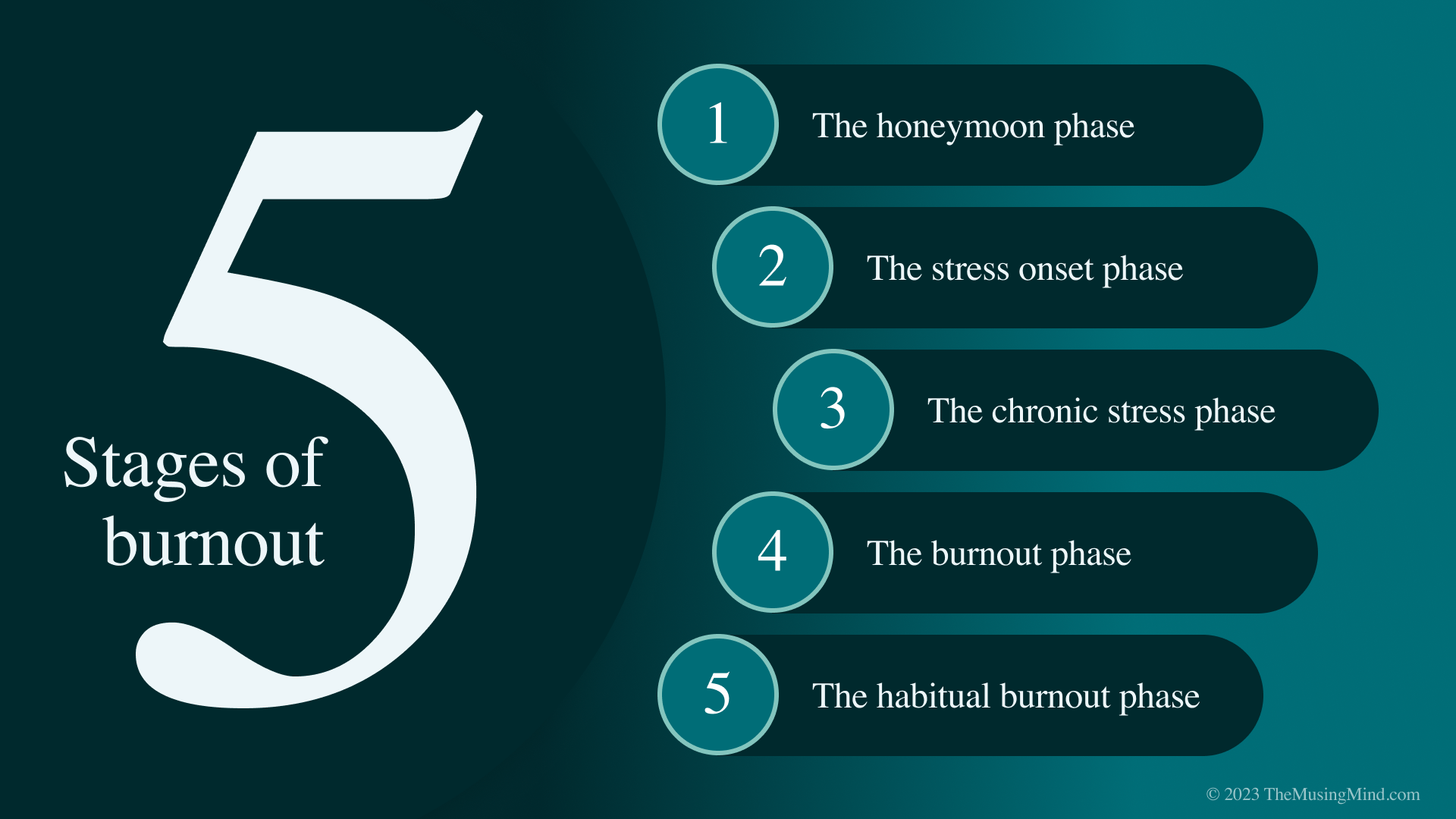The 5 stages of burnout
The two most common models of burnout stages include the 5 stages of burnout and the 12 stages of burnout.
Download the image file above to have a visual reference for the 5 stages of burnout model, and refer to the below list for an overview of each stage:
The honeymoon phase: in the beginning, you feel very engaged and enjoy what you’re doing. You have high energy, are feeling rewarded by the work, and want to prove yourself by working harder
The stress onset phase: in this phase, you still find find work rewarding, but stress starts to creep in. Stress is a useful thing (it actually is part of us waking up in the morning via the “cortisol pulse”) and we need enough to motivate us, but too much is damaging. Phase 2 can give way to phase 3 depending on how you react to the onset of stress.
The chronic stress phase: here is when you push past healthy stress levels. Your emotions can become harder to manage, reward diminishes, exhaustion increases, and productivity/attitude towards work are affected. Recovery can become much harder if your reaction is to deny or neglect the stress, which can accelerate a shift into burnout.
The burnout phase: at this point, you are now past your healthy limits and the chronic stress has pushed your body and mind into survival mode over a prolonged period of time. You are apt to lose more conscious control of your decisions, and denial of problems is likely to get worse, interfering with your ability to regulate your workload and facilitate recovery. Absent a drastic change in your working situation or a health issue, your momentum may end up carrying you into phase 5.
The habitual burnout phase: in phase 5, you are in a continual state of burnout. You likely feel trapped, your ability to help yourself recover has all but disappeared, and you are now at risk of serious issues such as depression or physical or mental collapse, which is unfortunately ultimately what pushes many people to stop working, and allow themselves to recover.
If you’re feeling burnt out, consider taking this confidential burnout assessment, which draws on questions from the Oldenburg Burnout Inventory (OLBI) to help you evaluate your level of burnout risk, in addition to providing other recommendations on how to recover from burnout.
DISCLAIMER: THIS WEBSITE DOES NOT PROVIDE MEDICAL ADVICE
The information, including but not limited to, text, graphics, images and other material contained on this website are for informational purposes only. No material on this site is intended to be a substitute for professional medical advice, diagnosis or treatment. Always seek the advice of your physician or other qualified health care provider with any questions you may have regarding a medical condition or treatment and before undertaking a new health care regimen, and never disregard professional medical advice or delay in seeking it because of something you have read on this website.
